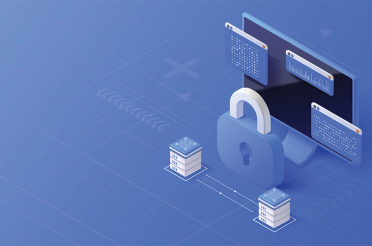With most workplaces reliant on digital technology, employees will inevitably leave a digital trace from some of their work-related practices. From the moment that they join, an employee will be digitally connected to your organisation, via a company email address, application use, login credentials, and a lot more.
When an employee leaves an organisation, a process known as digital offboarding must be followed to remove any digital traces. This procedure entails separating the former employee from the organisation’s technology assets, and it is critical to complete in order to protect the integrity of the organisation’s digital and online security.
A recent survey found that 20% of organisations have experienced a data breach due to a former employee. This highlights the need for companies to remain vigilant. It would be unfortunate if a former employee decided to act maliciously by using an organisations files and resources for their own purposes, or to email company clients in a disrespectful and malevolent manner.
It is important that the process of digital offboarding is undertaken whenever a staff member departs from an organisation.
Below we have compiled a checklist which can be used by organisations whenever they undertake this important task:
A Digital Offboarding Checklist
- The Transferring of Knowledge
When a person leaves an organisation, valuable knowledge might be lost as well, and it is critical that this knowledge be preserved via the digital offboarding process.
This knowledge may include access to business social media profiles, as well as the programmes used and their login passwords.
Because it is critical to keep this knowledge after staff departure, it is best collected during the employee exit interview. If employees frequently document their methods and workflows, this information may be easily obtained in the future as needed.
- Address Any Social Media Connections to The Organisation
A departing employee may have social media connections to your organisation, such as being an admin on a company Facebook page, or the ability to post to a company represented LinkedIn page. These connections should be replaced and removed wherever is appropriate.
- Identify All of The Applications and Logins That a Person Has Been Using
It is critical to be aware of any applications that an employee may have used for work-related purposes, as you will need to address these either by removing their credential access, changing the login process, or, at the extreme, removing all access after any company data that will be required in the future has been exported.
- Change Organisation Email Account Passwords
Changing a former employee’s email passwords is one of the first offboarding processes that should be undertaken, as this will immediately stop a former employee from receiving company information, and it will also stop them from emailing others as a representative of the company.
Employee email accounts are usually not closed immediately as the emails within them, and their content may need to be stored for future access, but you should change the password for these accounts as soon as possible to ensure that the former employee no longer has any organisation access.
- Change Employee Passwords for Any Applications Used
It is also critical that you change the passwords for any work-related applications that an employee may have been accessing from within or outside the company, on both organisational and personal devices. Even if they can’t access their work devices anymore, it doesn’t mean they can’t access their old corporate accounts using their personal devices.
By changing ex-employee passwords, your organisation will remove their access regardless of the type of device they use.
- Regain Any Organisational Devices
As part of the offboarding process you should ensure that you recover any company-owned devices from the exiting employee and be mindful that remote working employees may possess company issued equipment outside of the workplace.
This should be done as soon as possible to avoid the loss of the equipment, and to facilitate the complete offboarding of the ex-staff member.
- Recover Any Data from Employee Personal Devices
If your organisation allows their employees to use their own personal devices for work-related purposes (commonly referred to as BYOD; Bring Your Own Device) you will need to ensure that you have recovered all company data from the devices of the departing employee. You should also consider implementing an organisation-wide backup policy for personal devices to avoid any potential complications from occurring in the future.
- Transfer Data and Close Employee Accounts
Ex-employee company accounts should not be kept open permanently. When an employee leaves, you should transfer their work-related data to an appropriate location before closing their account. Leaving former employee accounts accessible exposes them to unauthorised access and security breaches, and account breaches are possible without frequent monitoring. A malicious party could gain access to the account and use it in a way that is detrimental and harmful to your organisation, and its reputation.
- Remove an Ex-Employee’s Device Access to Your Applications, Network and Systems
By utilising a device access management system, you may prevent a former employee and their devices from gaining future access to your organisation, and you should remove the former employee’s devices from any list of approved devices that may have originated within your organisation.
- Change Any Physical Digital Passcodes to Your Building or Premises
Unfortunately, security threats can occur through physical actions as well as through digital actions. Be sure to remove the potential for any former employee to access your premises by changing your digital door and gate passcodes.
Do You Need Help with Offboarding Ex-Employees and a Reduction of Your Security Risk?
By undertaking digital offboarding you are protecting your organisation from potential security risks and breaches. If you would like our advice or assistance in implementing digital offboarding procedures, please contact us today for a free consultation.








